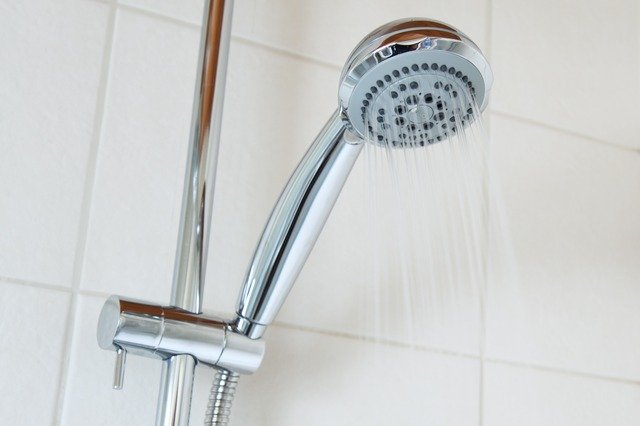Have you noticed water droplets clinging to your bathroom walls after every shower? That’s condensation—and while it might seem harmless at first, it can lead to mold, peeling paint, and even unpleasant odors over time.
If you’re tired of dealing with damp walls and want to protect your bathroom from damage, you’re in the right place. In this guide, you’ll discover simple, effective ways to stop condensation on your bathroom walls for good. Whether you’re frustrated by constant cleaning or worried about long-term problems, we’ll break down the solutions step by step.
Ready to take control of your bathroom’s comfort and cleanliness? Let’s dive in!
Table of Contents
Causes Of Bathroom Condensation
Bathroom condensation can feel like an ongoing battle. You step out of a refreshing shower only to notice droplets forming on the walls or streaks of water running down. While it’s common, it’s not inevitable, and understanding the causes can help you stop it for good. Let’s break down why this happens and how you can take control.
Humidity From Showers And Baths
Hot water from showers and baths generates a lot of steam. This moisture doesn’t just disappear—it settles on the cold surfaces of your bathroom, like walls, mirrors, and windows. If you’re not managing this humidity, it quickly turns into condensation.
Think about how long your showers are and the water temperature. The longer and hotter the shower, the more steam you’ll produce. This is especially noticeable in smaller bathrooms, where moisture has fewer places to escape.
Poor Ventilation
Without proper airflow, bathroom moisture has nowhere to go. A poorly ventilated bathroom traps steam, turning it into water droplets on your walls. This can also lead to a musty smell and even mold growth over time.
If you don’t have an exhaust fan, the problem worsens. Even if you do, it’s important to use it consistently and let it run for at least 15 minutes after your shower. Have you checked if your fan is working efficiently?
Temperature Differences
Cold bathroom walls meeting warm, moist air is a recipe for condensation. This happens most often in winter when bathroom walls and windows are colder than the room temperature. The steam from your shower cools down quickly upon contact, forming water droplets.
Simple things like warming up your bathroom slightly before showering can reduce this effect. You can also consider insulating your walls to maintain a more consistent temperature. Have you noticed condensation is worse during colder months?
By understanding these causes, you’re already on your way to a drier, more comfortable bathroom. The next step is to tackle these issues head-on with easy solutions that make a big impact.

Credit: castlecomplements.com
Ventilation Solutions
Condensation on bathroom walls can be frustrating, but fixing it often starts with improving ventilation. Proper airflow prevents moisture from settling and causing mold or damp patches. Let’s look at simple and effective ways to enhance your bathroom’s ventilation.
Installing Exhaust Fans
An exhaust fan is one of the easiest ways to combat condensation. It actively pulls out moist air from the bathroom, reducing humidity levels. Choose a fan with the right capacity for your bathroom size—check the packaging for recommended square footage.
Position the fan near your shower or bathtub where moisture builds up the most. Don’t forget to clean the fan regularly so it can work efficiently. If you’ve ever felt like your bathroom stays steamy forever, a powerful exhaust fan can be a game-changer.
Opening Windows And Doors
Sometimes the simplest fixes are the most effective. Open your bathroom window after every shower to let steam escape. Even a small window can make a big difference in controlling moisture.
If your bathroom doesn’t have a window, keep the door open after using it. This allows the humid air to dissipate into other areas of your home instead of sticking around. Ever noticed how fresh air feels? That’s what you’re inviting in when you open things up.
Using Dehumidifiers
Dehumidifiers are like silent helpers that reduce excess moisture. Place a compact unit in your bathroom, especially if it’s prone to high humidity. It’ll work quietly in the background, collecting moisture before it causes problems.
Make sure to empty the dehumidifier regularly to keep it running smoothly. If you’re wondering whether it’s worth it, think about how much time you spend scrubbing mold off bathroom walls—a dehumidifier can save you that effort.
Which of these ventilation solutions will you try first? Small changes can lead to a big difference in keeping your bathroom fresh and condensation-free.
Temperature Control Tips
Condensation on bathroom walls isn’t just annoying; it can lead to mold growth and peeling paint. The good news? Managing temperature is one of the simplest ways to tackle this issue. Let’s dive into some practical temperature control tips to keep your bathroom walls dry and clean.
Improving Insulation
Insulation plays a huge role in preventing condensation. Poorly insulated walls stay cold, making them a magnet for moisture when warm air hits them. Add insulation to your bathroom walls to reduce this temperature difference.
If wall insulation isn’t an option, consider insulating your windows. Double-glazed windows, for example, help trap heat and prevent cold surfaces. Even something as simple as thermal curtains can make a noticeable difference.
Using Heated Bathroom Mirrors
Have you noticed how your mirror fogs up after a hot shower? That’s the same condensation process happening on your walls. Heated bathroom mirrors work by keeping the surface warm, so moisture doesn’t settle on them.
These mirrors are easy to install and double as a modern bathroom upgrade. Plus, they’re energy-efficient, so you don’t have to worry about high electricity bills. Some even come with built-in LED lights for better functionality.
Adjusting Room Temperature
Maintaining a consistent room temperature can help reduce condensation. Try setting your bathroom to a comfortable temperature using a portable heater or underfloor heating. Avoid letting the room get too cold during the day.
Use your bathroom fan to vent out excess steam after a shower. If you don’t have one, crack open a window for a few minutes. The goal is to let warm air circulate and prevent cold surfaces from forming.
Have you noticed any specific spots where condensation is worse in your bathroom? That could be a sign of uneven heating or poor insulation. Tackling those problem areas can make a big difference.
Temperature control doesn’t have to be complicated. Small adjustments can go a long way in keeping your bathroom walls dry and free from damage.
Moisture-resistant Materials
Dealing with condensation on bathroom walls can feel like an uphill battle. But did you know the materials you choose for your walls can make a huge difference? Moisture-resistant materials not only help prevent dampness but also protect your walls from long-term damage. Let’s dive into some practical solutions that you can start using today.
Choosing Waterproof Paint
Waterproof paint is one of the easiest ways to combat condensation. It creates a barrier that stops moisture from soaking into the walls. Look for paint specifically labeled as “bathroom paint” or “moisture-resistant” at your local hardware store.
When applying it, focus on areas most prone to condensation, like the wall near your shower or above the sink. Don’t skip the primer—it helps the paint stick better and adds another layer of protection. A small investment in quality paint can save you from peeling walls and mold later.
Applying Anti-condensation Coatings
Anti-condensation coatings work differently than regular waterproof paints. They reduce the temperature difference between your bathroom walls and the air, preventing water droplets from forming. This makes them a smart choice for colder bathrooms.
These coatings often have insulating properties, which means your bathroom will feel slightly warmer, too. Apply it like regular paint, but make sure the walls are clean and dry first. If you’ve ever wiped down a damp bathroom wall in frustration, this might be the solution you’ve been looking for.
Using Moisture-resistant Wall Panels
Wall panels designed for moisture resistance are a game-changer. They’re made from materials like PVC or treated wood that repel water instead of absorbing it. Plus, they come in various designs, so you don’t have to sacrifice style for functionality.
Installing these panels can be a weekend DIY project or handled by a professional. Once in place, they’re incredibly low-maintenance—just wipe them clean with a damp cloth. Imagine never having to deal with cracked or bubbling paint again!
Which of these options seems most practical for your bathroom? A combination of these materials might just be the perfect strategy to keep your walls dry and beautiful.
Daily Habits To Reduce Condensation
Condensation on bathroom walls might seem like a small inconvenience, but over time, it can lead to mold, peeling paint, and even damage to your bathroom’s structure. Luckily, small changes in your daily routine can make a big difference. By adopting simple habits, you’ll not only protect your walls but also create a fresher and healthier bathroom environment.
Wiping Down Walls After Use
Steam from hot showers often clings to walls, leaving them damp. Grab a microfiber cloth or squeegee and wipe down the walls as soon as you’re done showering. It takes less than a minute and prevents moisture from settling.
Think of it like drying your dishes after washing—except it’s your walls. You’ll notice less water streaks and fewer chances for mold to grow over time. If you share the bathroom, make it a team effort; everyone can pitch in.
Keeping Doors Open After Showers
Closing the bathroom door after a shower traps moisture inside, creating a sauna-like effect. Instead, leave the door wide open to let steam escape. Better yet, open a window if you have one.
Ever noticed how quickly steam clears out in a well-ventilated space? This simple habit keeps your bathroom walls from staying damp for hours. If privacy is a concern, crack the door open slightly instead of fully.
Avoiding Overheating Water
Using excessively hot water produces more steam, which means more condensation. Adjust your water temperature to a comfortable level that doesn’t turn your bathroom into a foggy cave. This is especially helpful in colder months when you might be tempted to crank up the heat.
Try lowering your shower temperature by just a few degrees—it won’t impact your comfort but will reduce the amount of moisture left on your walls. Plus, it saves on energy bills. Have you ever considered how much steam you could cut down with this simple tweak?
By building these habits into your routine, you’ll see noticeable improvements in your bathroom’s condition. Which one will you start today?

Credit: www.eco-home-essentials.co.uk
Long-term Prevention Strategies
Condensation on bathroom walls can lead to mold and damage. Addressing the issue requires a focus on long-term solutions. These strategies ensure your bathroom remains dry and healthy. They also help you maintain a more comfortable and clean environment.
Upgrading Bathroom Fixtures
Old fixtures may contribute to excessive moisture in your bathroom. Replace outdated showerheads with water-efficient models to reduce steam. Install heated towel racks to prevent dampness from lingering on towels. Use a dehumidifying extractor fan that operates quietly and efficiently. These upgrades minimize moisture buildup and create a drier atmosphere.
Regular Maintenance Of Ventilation Systems
Ventilation systems are key to reducing bathroom condensation. Clean your exhaust fan regularly to remove dust and debris. Inspect vents for blockages to ensure proper airflow. Replace worn-out fans with high-capacity models for better performance. Well-maintained systems help keep walls free of moisture.
Monitoring Humidity Levels
Keep an eye on your bathroom’s humidity levels. Use a hygrometer to measure moisture in the air. Maintain humidity below 50% to avoid condensation issues. Run a dehumidifier during and after showers if needed. These steps help regulate the moisture and protect your walls.

Credit: showerwall.co.uk
Frequently Asked Questions
How Do I Stop My Bathroom Walls From Sweating?
Reduce bathroom wall sweating by improving ventilation, using a dehumidifier, insulating walls, and wiping surfaces dry after showers.
How Do You Moisture Proof Bathroom Walls?
Apply waterproof paint or sealant, install moisture-resistant drywall, and use tiles or panels for added protection. Ensure proper ventilation.
How Do I Stop Condensation In My Bathroom In The Winter?
Use an exhaust fan during and after showers. Open a window for ventilation. Wipe surfaces to remove moisture. Keep the bathroom warm. Use a dehumidifier if needed.
How Do I Stop Condensation On The Inside Of My Walls?
Reduce condensation by improving ventilation, using a dehumidifier, insulating walls, sealing cracks, and maintaining consistent indoor temperatures.
Conclusion
Stopping condensation on bathroom walls keeps your space clean and healthy. Use proper ventilation and wipe surfaces dry after showers. Install a dehumidifier or open windows to reduce moisture levels. Regularly check for leaks or mold to prevent long-term damage.
Simple habits like these make a big difference over time. Keeping your bathroom dry and fresh is easier than you think. Start small, stay consistent, and enjoy a more comfortable space.







